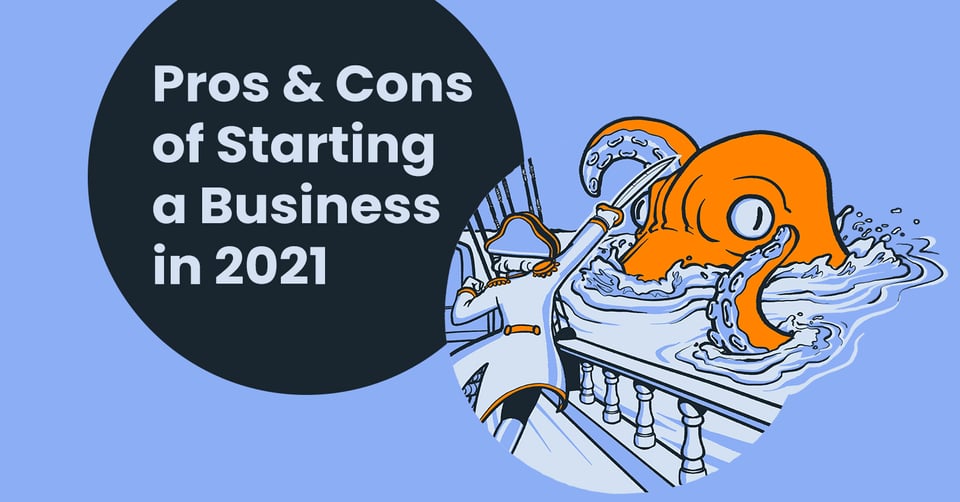Marketing is one of the most misunderstood areas of business.
Unlike sales, it can’t always be measured with a simple “X times Y equals Z” equation. Its success depends on a whole host of outside factors, like where the buyer is in the sales funnel, who the ultimate decision-maker is, and whether there’s a budget cycle in play.
Today we’re talking about marketing ROI, or return on investment. We’ll explain how to calculate it and take a deeper look at how long it can take for your marketing efforts to pay off.
The Equation

To demonstrate the ROI equation, we’re going to keep things simple and say our product is your basic coffee mug.
Let’s say our labor and material costs to product the mug are $7, and we sell it to the customer for $10.
For every mug we sell, that’s a $3 profit. Easy enough.
Now, let’s say we decide to launch a Facebook campaign to advertise our awesome mug to coffee lovers across America. We’re going to give ourselves an ad budget of $5,000.
Now comes the fun part—making sales. The key here is tracking where those sales come from.
If you sell your product online, it’s super easy to track the source of your sales with tools like the Facebook pixel and Google Analytics.
If you sell in a brick-and-mortar store, you’ll want to implement a consistent system, like asking each customer “how did you hear about us?” and then recording their answers.
The goal is to figure out how many mug buyers found you via your Facebook ad.
Let’s say in this case we sell 7,000 mugs to people who found us from our Facebook ad. Woo hoo! That sounds great, right? But did we actually get a good return on our initial $5,000 advertising investment? It’s time to find out.
7,000 mugs x $3 profit per mug = $21,000 in gross revenue.
$21,000 gross revenue - $5,000 Facebook campaign = $16,000 in net revenue.
Now, we’re going to divide that $16,000 by our initial $5,000 investment.
$16,000 / $5,000 = 3.2, or 320%.
That final number, 320%, is our marketing ROI. That means we made 320% of our initial investment back. Awesome!
If you’re running multiple campaigns at once, this is a great way to determine which campaign is performing best and eliminate the losers.
If your ROI comes in at less than 1, or lower than 100%, you’re losing money on your investment. If this is the case, it’s probably time to consider a different marketing strategy.
How Long Until I See Results?

The above example is pretty cut and dry. We’re talking about an inexpensive B2C product that most consumers would buy on a whim.
In the real world, the scenario is likely far more complex.
Perhaps you sell a pricier B2C product that the customer has to think about for a while before making the decision to buy.
Maybe you’re a B2B service provider and you have to talk with several parties in an organization before making a sale.
Even if you sell a simple physical product, a customer may need to see it several times before finally pulling out their credit card and placing an order.
This is where calculating ROI gets a little more complicated. Many businesses will run a single marketing campaign, not see immediate results, and make an emotional decision that “marketing just doesn’t work!”
The fact is, though, when you have a complex scenario like those mentioned above, it can take a significant amount of time to see a return on your marketing efforts.
How much time? Well, it depends on your business. Marketing expert and author Lisa Shepherd advises businesses shouldn’t expect to see a dollars-and-cents return on their marketing efforts for at least the first 100 days.
It takes that long, she says, to put the foundations for a successful marketing program in place.
For B2B businesses, it’s even longer. According to the Marketing Sherpa B2B Benchmark Survey, the average B2B sales cycle is between 4 and 5 months. What’s more, it can take up to a year for a marketing campaign to produce noticeable growth in the sales pipeline.
And, are you ready for a doozy? When it comes to social marketing, more than half of marketers surveyed by Social Media Examiner said it took two years for their efforts on social media to lead to an uptick in sales.
The takeaway? Pack your patience and be consistent. By keeping a close eye on your marketing ROI over time and making adjustments based on what’s working best, you’ll lay the foundation for a successful long-term marketing strategy for your business.
Which marketing channels give you the best ROI? Do you have any questions on how to calculate your ROI? Leave a comment below and let us know.
For more how-to's on running a profitable business, subscribe to our YouTube channel!













.png)




